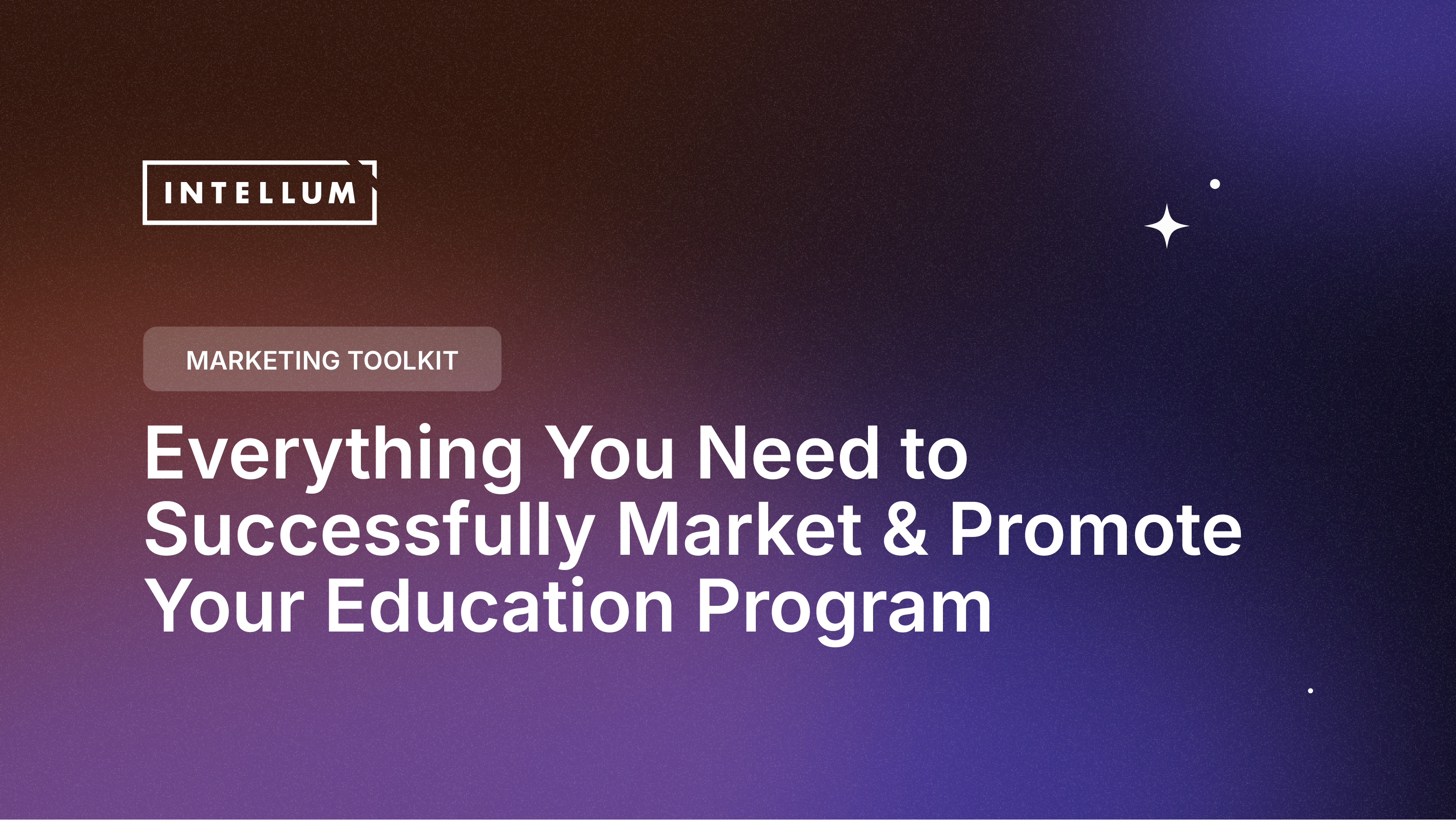The time has come—you’re ready to move your customer education program to a new learning management system (LMS) vendor and leave your legacy LMS behind.
Maybe your team has outgrown your existing LMS and its functionality no longer suits your educational program. Or perhaps you’re planning to scale your program and your current software is incapable of scaling with you as you grow.
When choosing a new LMS, you want to make sure you understand what the LMS partner will do, and what your team will be required to do as part of the process.
In this article, we’re sharing our tips and best practices for a successful LMS migration.
What to Migrate to Your New LMS
Three main types of data you’ll want to migrate are content, users, and enrollments.
Content
Within the content component, migration of the learning asset itself is the minimum required data.
Some LMS platforms can migrate additional course properties that eliminate lengthy manual input after the migration.
Your team also needs to consider whether you’ll add or change your branding while moving to a new LMS platform. Only a subset of LMS platforms support custom branding, so you’ll want to verify this is possible if it’s a key requirement.
Users
Education teams should focus primarily on migrating active users from their current platform to the new one. Of course, you can (and should) back up all user records from your previous LMS platform.
Enrollments
While migrating enrollments, we recommend only bringing over your completed enrollments, as moving those “in progress” often leads to confusion and support inquiries.
Questions to Ask Your LMS Provider About Migration
Before the LMS migration process begins, it’s vital to ensure you’ve found the right LMS provider for your needs and goals.
Here are five questions to ask a potential provider about their migration process:
1. Do you migrate the content asset only or the full course with all supporting properties?
If the provider migrates only the content asset itself, be aware that you’ll need to manually input the supporting course properties after the fact.
2. What level of detail can I migrate for enrollments and completions?
Determine if your new platform will migrate over the completion date, completion status, and expiration date.
The ability to migrate data points from your LMS is key, as some platforms can automate the re-enrollment process based on course expiration dates, like we do here at Intellum.
3. What user data details can I import?
Whether it’s standard or custom data, the more user profile details you can move over to the new platform, the better. Ask your LMS vendor if you’re able to migrate all the properties you previously used to define a user profile to the new platform.
Here at Intellum, we can accommodate more than twenty standard fields, plus additional custom fields, when migrating content over to our platform.
4. What guidance and assistance do you provide during the migration?
Your chosen provider should be proficient in both migration best practices and LMS implementation to improve the structure and organization of the educational experience.
5. Is there an additional cost for hands-on assistance with migrating LMS content, users, and enrollments?
Learn what the migration services include ahead of time. This keeps you from receiving an unexpected bill when you need assistance down the line.
How to Get Ready For Your LMS Migration
Your new LMS provider should explain each step and how your internal team can best support their efforts.
To make the transition as smooth as possible for your team, the new provider, and your learners, follow these steps:
1. Address any branding changes.
If your migration plan includes adding or changing branding, get this process started as quickly as possible. With all the people and moving parts required, new branding can create significant delays in the migration process.
2. Communicate the change.
You’ll need to help your learners prepare for the new learning platform. In your communications, focus on what’s changing, why, and when. Reassure your customers that you’ll communicate more information or instructions when it’s needed.
Be sure to share up-to-date timelines with your customers. Prepare users if you expect any downtime in access to the learning environment.
3. Set deadlines.
You’ll need to plan for and communicate two key deadlines with your customers:
First, set a cut-off for completing “in progress” enrollments to support your efforts to move over only completed enrollments to the new platform.
The second deadline to establish is the anticipated migration project completion date.
4. Collect your content.
Where your content lives and how quickly you can access it will make a substantial impact on how long your implementation takes.
5. Organize your content.
How you organize your content is just as important as the quality of your content. Take time to think through the learner journey and how you want to organize and structure content.
6. Conduct a pilot run.
Pull together a pilot group of users to ensure that the new LMS is easy to use and navigate. This allows you to test out the new platform and collect feedback to make changes and improve your program for all users before you migrate everyone over.
Advice For a Successful LMS Migration
You want to build the best learning experience for your customers. 👏
The learner experience is top of mind for us, too.
That’s why we asked our team of subject matter experts to share additional advice on LMS migration best practices.
Here’s what they said:
Don’t limit yourself to what it was before. This is your chance to reinvent your program and enhance the educational experience for your customers. Devote enough time to reorganize it to be more user-friendly or to target new education goals.
Move only the most current content. Before moving platforms, weed out old content that’s no longer relevant. Similar to packing up your belongings before moving to a new home, if you bring over everything and wait to sort through it until after the move, you’ll end up doing twice the work!
Focus on learning content only. You may have used your previous LMS more like a content management system by storing general marketing and sales enablement materials alongside learning content. Make sure your customer education content focuses on learning activities only (e.g., certification, courses, eLearning, help content, etc.) in the new platform, rather than general marketing or sales information.
Ready for a New LMS?
Remember, your goal is not just to move to a new LMS but to create a more effective and user-friendly learning experience. By following these best practices and seeking expert advice, you'll not only ensure a successful migration but also set the stage for a more robust and engaging educational program for your customers.
If you’re looking for your next LMS, feel free to reach out—our team is here to help.






